Dan Wang
BEVUDA++: Geometric-aware Unsupervised Domain Adaptation for Multi-View 3D Object Detection
Sep 17, 2025Abstract:Vision-centric Bird's Eye View (BEV) perception holds considerable promise for autonomous driving. Recent studies have prioritized efficiency or accuracy enhancements, yet the issue of domain shift has been overlooked, leading to substantial performance degradation upon transfer. We identify major domain gaps in real-world cross-domain scenarios and initiate the first effort to address the Domain Adaptation (DA) challenge in multi-view 3D object detection for BEV perception. Given the complexity of BEV perception approaches with their multiple components, domain shift accumulation across multi-geometric spaces (e.g., 2D, 3D Voxel, BEV) poses a significant challenge for BEV domain adaptation. In this paper, we introduce an innovative geometric-aware teacher-student framework, BEVUDA++, to diminish this issue, comprising a Reliable Depth Teacher (RDT) and a Geometric Consistent Student (GCS) model. Specifically, RDT effectively blends target LiDAR with dependable depth predictions to generate depth-aware information based on uncertainty estimation, enhancing the extraction of Voxel and BEV features that are essential for understanding the target domain. To collaboratively reduce the domain shift, GCS maps features from multiple spaces into a unified geometric embedding space, thereby narrowing the gap in data distribution between the two domains. Additionally, we introduce a novel Uncertainty-guided Exponential Moving Average (UEMA) to further reduce error accumulation due to domain shifts informed by previously obtained uncertainty guidance. To demonstrate the superiority of our proposed method, we execute comprehensive experiments in four cross-domain scenarios, securing state-of-the-art performance in BEV 3D object detection tasks, e.g., 12.9\% NDS and 9.5\% mAP enhancement on Day-Night adaptation.
MoE-Compression: How the Compression Error of Experts Affects the Inference Accuracy of MoE Model?
Sep 09, 2025Abstract:With the widespread application of Mixture of Experts (MoE) reasoning models in the field of LLM learning, efficiently serving MoE models under limited GPU memory constraints has emerged as a significant challenge. Offloading the non-activated experts to main memory has been identified as an efficient approach to address such a problem, while it brings the challenges of transferring the expert between the GPU memory and main memory. We need to explore an efficient approach to compress the expert and analyze how the compression error affects the inference performance. To bridge this gap, we propose employing error-bounded lossy compression algorithms (such as SZ3 and CuSZp) to compress non-activated experts, thereby reducing data transfer overhead during MoE inference. We conduct extensive experiments across various benchmarks and present a comprehensive analysis of how compression-induced errors in different experts affect overall inference accuracy. The results indicate that experts in the shallow layers, which are primarily responsible for the attention mechanism and the transformation of input tokens into vector representations, exhibit minimal degradation in inference accuracy when subjected to bounded errors. In contrast, errors in the middle-layer experts, which are central to model reasoning, significantly impair inference accuracy. Interestingly, introducing bounded errors in the deep-layer experts, which are mainly responsible for instruction following and output integration, can sometimes lead to improvements in inference accuracy.
Ada-TransGNN: An Air Quality Prediction Model Based On Adaptive Graph Convolutional Networks
Aug 25, 2025Abstract:Accurate air quality prediction is becoming increasingly important in the environmental field. To address issues such as low prediction accuracy and slow real-time updates in existing models, which lead to lagging prediction results, we propose a Transformer-based spatiotemporal data prediction method (Ada-TransGNN) that integrates global spatial semantics and temporal behavior. The model constructs an efficient and collaborative spatiotemporal block set comprising a multi-head attention mechanism and a graph convolutional network to extract dynamically changing spatiotemporal dependency features from complex air quality monitoring data. Considering the interaction relationships between different monitoring points, we propose an adaptive graph structure learning module, which combines spatiotemporal dependency features in a data-driven manner to learn the optimal graph structure, thereby more accurately capturing the spatial relationships between monitoring points. Additionally, we design an auxiliary task learning module that enhances the decoding capability of temporal relationships by integrating spatial context information into the optimal graph structure representation, effectively improving the accuracy of prediction results. We conducted comprehensive evaluations on a benchmark dataset and a novel dataset (Mete-air). The results demonstrate that our model outperforms existing state-of-the-art prediction models in short-term and long-term predictions.
Dream to Chat: Model-based Reinforcement Learning on Dialogues with User Belief Modeling
Aug 23, 2025Abstract:World models have been widely utilized in robotics, gaming, and auto-driving. However, their applications on natural language tasks are relatively limited. In this paper, we construct the dialogue world model, which could predict the user's emotion, sentiment, and intention, and future utterances. By defining a POMDP, we argue emotion, sentiment and intention can be modeled as the user belief and solved by maximizing the information bottleneck. By this user belief modeling, we apply the model-based reinforcement learning framework to the dialogue system, and propose a framework called DreamCUB. Experiments show that the pretrained dialogue world model can achieve state-of-the-art performances on emotion classification and sentiment identification, while dialogue quality is also enhanced by joint training of the policy, critic and dialogue world model. Further analysis shows that this manner holds a reasonable exploration-exploitation balance and also transfers well to out-of-domain scenarios such as empathetic dialogues.
VQ-VAE Based Digital Semantic Communication with Importance-Aware OFDM Transmission
Aug 12, 2025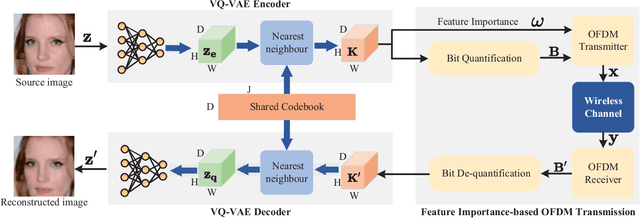
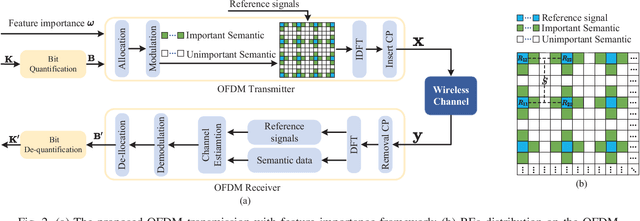
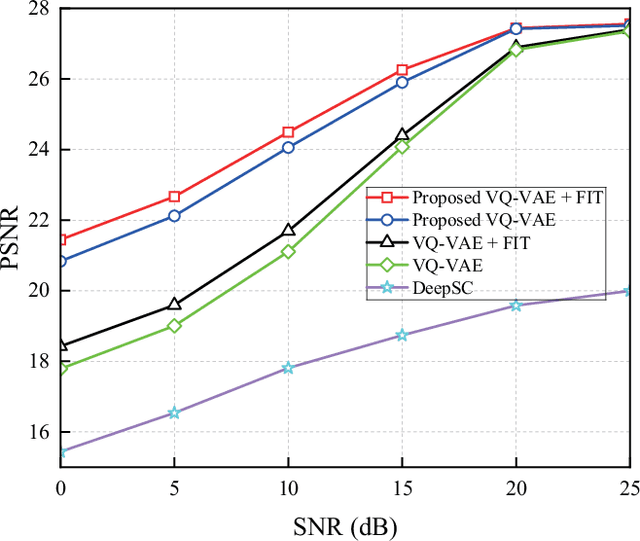
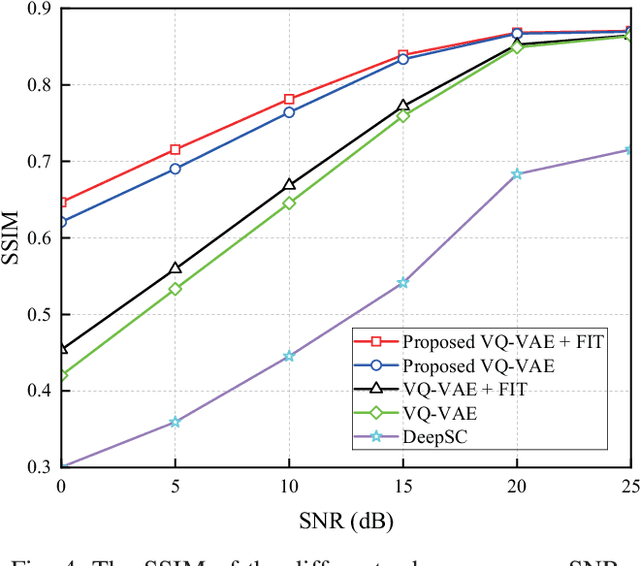
Abstract:Semantic communication (SemCom) significantly reduces redundant data and improves transmission efficiency by extracting the latent features of information. However, most of the conventional deep learning-based SemCom systems focus on analog transmission and lack in compatibility with practical digital communications. This paper proposes a vector quantized-variational autoencoder (VQ-VAE) based digital SemCom system that directly transmits the semantic features and incorporates the importance-aware orthogonal frequency division multiplexing (OFDM) transmission to enhance the SemCom performance, where the VQ-VAE generates a discrete codebook shared between the transmitter and receiver. At transmitter, the latent semantic features are firstly extracted by VQ-VAE, and then the shared codebook is adopted to match these features, which are subsequently transformed into a discrete version to adapt the digital transmission. To protect the semantic information, an importance-aware OFDM transmission strategy is proposed to allocate the key features near the OFDM reference signals, where the feature importance is derived from the gradient-based method. At the receiver, the features are rematched with the shared codebook to further correct errors. Finally, experimental results demonstrate that our proposed scheme outperforms the conventional DeepSC and achieves better reconstruction performance under low SNR region.
KG2QA: Knowledge Graph-enhanced Retrieval-Augmented Generation for Communication Standards Question Answering
Jun 08, 2025Abstract:There are many types of standards in the field of communication. The traditional consulting model has a long cycle and relies on the knowledge and experience of experts, making it difficult to meet the rapidly developing technological demands. This paper combines the fine-tuning of large language models with the construction of knowledge graphs to implement an intelligent consultation and question-answering system for communication standards. The experimental results show that after LoRA tuning on the constructed dataset of 6,587 questions and answers in the field of communication standards, Qwen2.5-7B-Instruct demonstrates outstanding professional capabilities in the field of communication standards on the test set. BLEU-4 rose from 18.8564 to 66.8993, and evaluation indicators such as ROUGE also increased significantly, outperforming the fine-tuning effect of the comparison model Llama-3-8B-Instruct. Based on the ontology framework containing 6 entity attributes and 10 relation attributes, a knowledge graph of the communication standard domain containing 13,906 entities and 13,524 relations was constructed, showing a relatively good query accuracy rate. The intelligent consultation and question-answering system enables the fine-tuned model on the server side to access the locally constructed knowledge graph and conduct graphical retrieval of key information first, which is conducive to improving the question-answering effect. The evaluation using DeepSeek as the Judge on the test set shows that our RAG framework enables the fine-tuned model to improve the scores at all five angles, with an average score increase of 2.26%. And combined with web services and API interfaces, it has achieved very good results in terms of interaction experience and back-end access, and has very good practical application value.
ReeM: Ensemble Building Thermodynamics Model for Efficient HVAC Control via Hierarchical Reinforcement Learning
May 05, 2025Abstract:The building thermodynamics model, which predicts real-time indoor temperature changes under potential HVAC (Heating, Ventilation, and Air Conditioning) control operations, is crucial for optimizing HVAC control in buildings. While pioneering studies have attempted to develop such models for various building environments, these models often require extensive data collection periods and rely heavily on expert knowledge, making the modeling process inefficient and limiting the reusability of the models. This paper explores a model ensemble perspective that utilizes existing developed models as base models to serve a target building environment, thereby providing accurate predictions while reducing the associated efforts. Given that building data streams are non-stationary and the number of base models may increase, we propose a Hierarchical Reinforcement Learning (HRL) approach to dynamically select and weight the base models. Our approach employs a two-tiered decision-making process: the high-level focuses on model selection, while the low-level determines the weights of the selected models. We thoroughly evaluate the proposed approach through offline experiments and an on-site case study, and the experimental results demonstrate the effectiveness of our method.
MoLe-VLA: Dynamic Layer-skipping Vision Language Action Model via Mixture-of-Layers for Efficient Robot Manipulation
Mar 26, 2025Abstract:Multimodal Large Language Models (MLLMs) excel in understanding complex language and visual data, enabling generalist robotic systems to interpret instructions and perform embodied tasks. Nevertheless, their real-world deployment is hindered by substantial computational and storage demands. Recent insights into the homogeneous patterns in the LLM layer have inspired sparsification techniques to address these challenges, such as early exit and token pruning. However, these methods often neglect the critical role of the final layers that encode the semantic information most relevant to downstream robotic tasks. Aligning with the recent breakthrough of the Shallow Brain Hypothesis (SBH) in neuroscience and the mixture of experts in model sparsification, we conceptualize each LLM layer as an expert and propose a Mixture-of-Layers Vision-Language-Action model (MoLe-VLA, or simply MoLe) architecture for dynamic LLM layer activation. We introduce a Spatial-Temporal Aware Router (STAR) for MoLe to selectively activate only parts of the layers based on the robot's current state, mimicking the brain's distinct signal pathways specialized for cognition and causal reasoning. Additionally, to compensate for the cognitive ability of LLMs lost in MoLe, we devise a Cognition Self-Knowledge Distillation (CogKD) framework. CogKD enhances the understanding of task demands and improves the generation of task-relevant action sequences by leveraging cognitive features. Extensive experiments conducted in both RLBench simulation and real-world environments demonstrate the superiority of MoLe-VLA in both efficiency and performance. Specifically, MoLe-VLA achieves an 8% improvement in the mean success rate across ten tasks while reducing computational costs by up to x5.6 compared to standard LLMs.
StyleMorpheus: A Style-Based 3D-Aware Morphable Face Model
Mar 14, 2025Abstract:For 3D face modeling, the recently developed 3D-aware neural rendering methods are able to render photorealistic face images with arbitrary viewing directions. The training of the parametric controllable 3D-aware face models, however, still relies on a large-scale dataset that is lab-collected. To address this issue, this paper introduces "StyleMorpheus", the first style-based neural 3D Morphable Face Model (3DMM) that is trained on in-the-wild images. It inherits 3DMM's disentangled controllability (over face identity, expression, and appearance) but without the need for accurately reconstructed explicit 3D shapes. StyleMorpheus employs an auto-encoder structure. The encoder aims at learning a representative disentangled parametric code space and the decoder improves the disentanglement using shape and appearance-related style codes in the different sub-modules of the network. Furthermore, we fine-tune the decoder through style-based generative adversarial learning to achieve photorealistic 3D rendering quality. The proposed style-based design enables StyleMorpheus to achieve state-of-the-art 3D-aware face reconstruction results, while also allowing disentangled control of the reconstructed face. Our model achieves real-time rendering speed, allowing its use in virtual reality applications. We also demonstrate the capability of the proposed style-based design in face editing applications such as style mixing and color editing. Project homepage: https://github.com/ubc-3d-vision-lab/StyleMorpheus.
VVRec: Reconstruction Attacks on DL-based Volumetric Video Upstreaming via Latent Diffusion Model with Gamma Distribution
Feb 25, 2025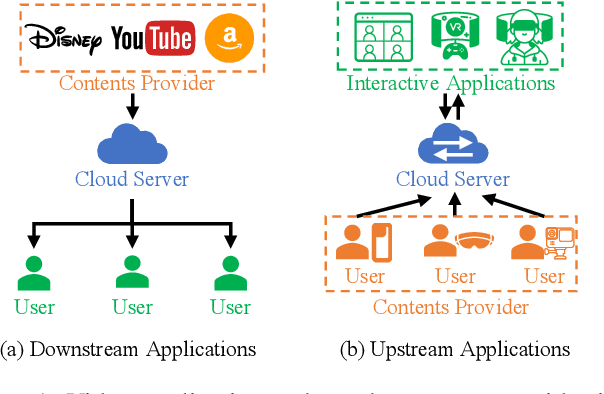
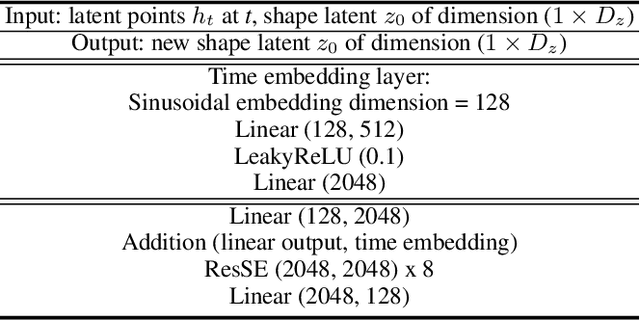
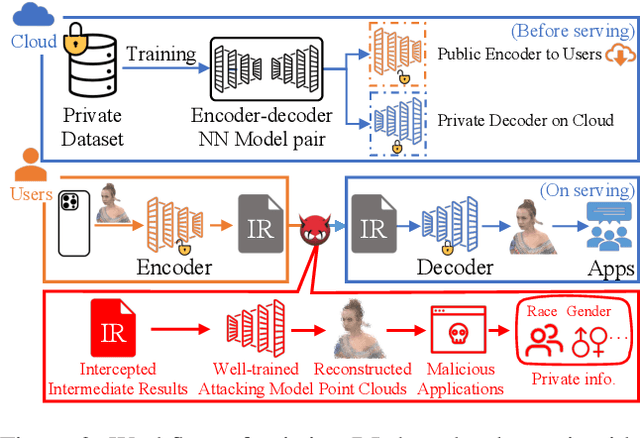
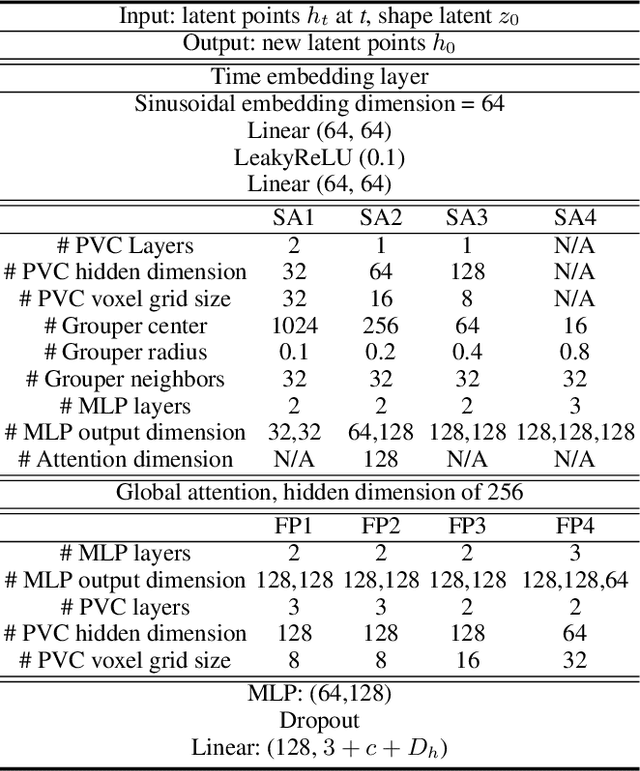
Abstract:With the popularity of 3D volumetric video applications, such as Autonomous Driving, Virtual Reality, and Mixed Reality, current developers have turned to deep learning for compressing volumetric video frames, i.e., point clouds for video upstreaming. The latest deep learning-based solutions offer higher efficiency, lower distortion, and better hardware support compared to traditional ones like MPEG and JPEG. However, privacy threats arise, especially reconstruction attacks targeting to recover the original input point cloud from the intermediate results. In this paper, we design VVRec, to the best of our knowledge, which is the first targeting DL-based Volumetric Video Reconstruction attack scheme. VVRec demonstrates the ability to reconstruct high-quality point clouds from intercepted transmission intermediate results using four well-trained neural network modules we design. Leveraging the latest latent diffusion models with Gamma distribution and a refinement algorithm, VVRec excels in reconstruction quality, color recovery, and surpasses existing defenses. We evaluate VVRec using three volumetric video datasets. The results demonstrate that VVRec achieves 64.70dB reconstruction accuracy, with an impressive 46.39% reduction of distortion over baselines.
 Add to Chrome
Add to Chrome Add to Firefox
Add to Firefox Add to Edge
Add to Edge